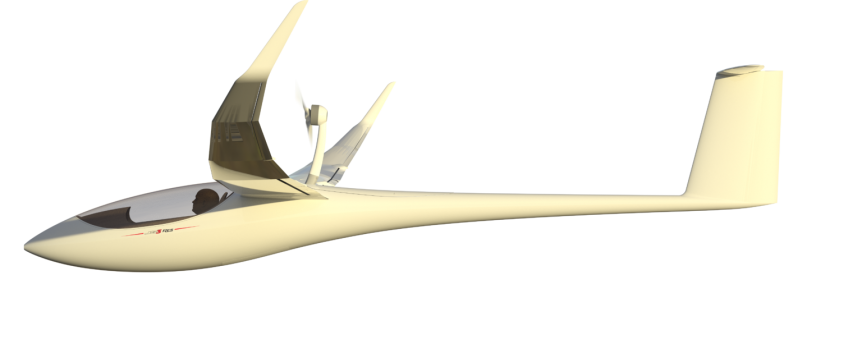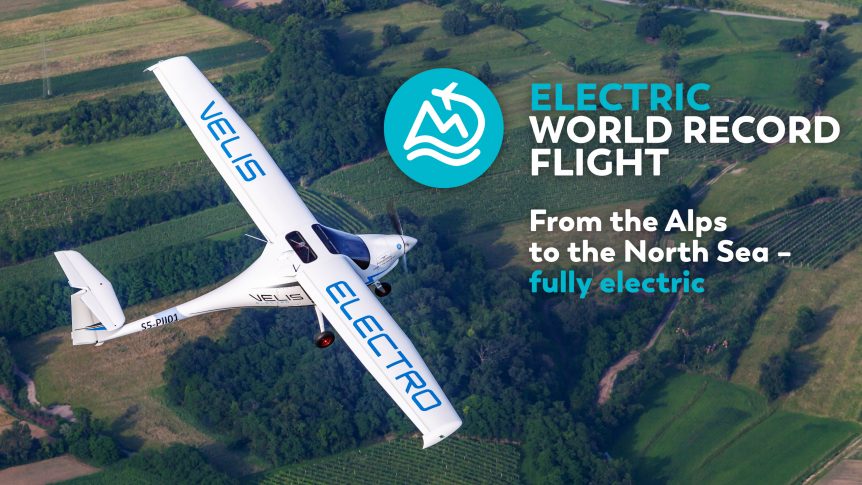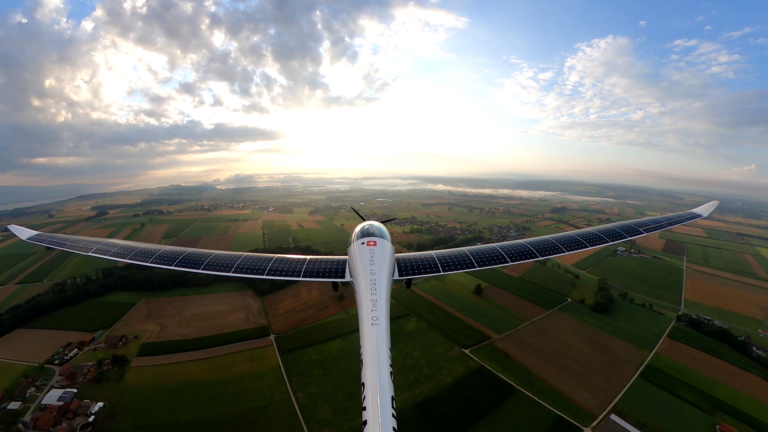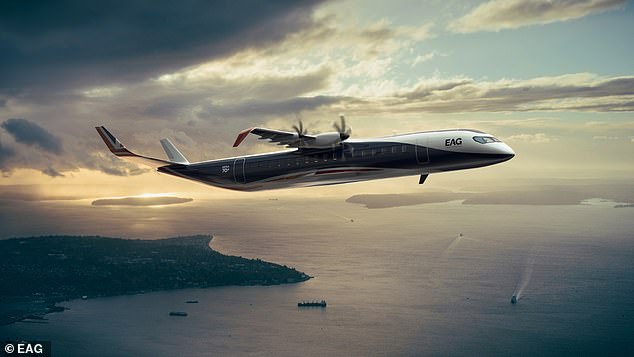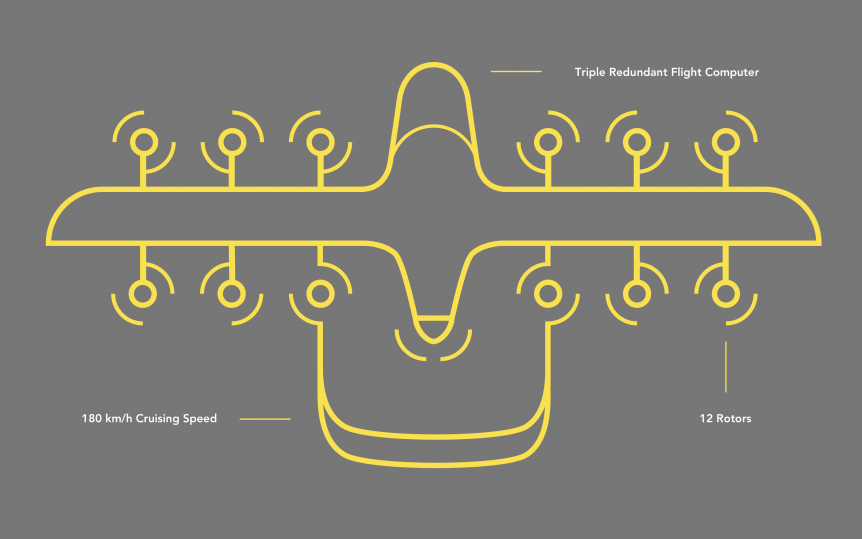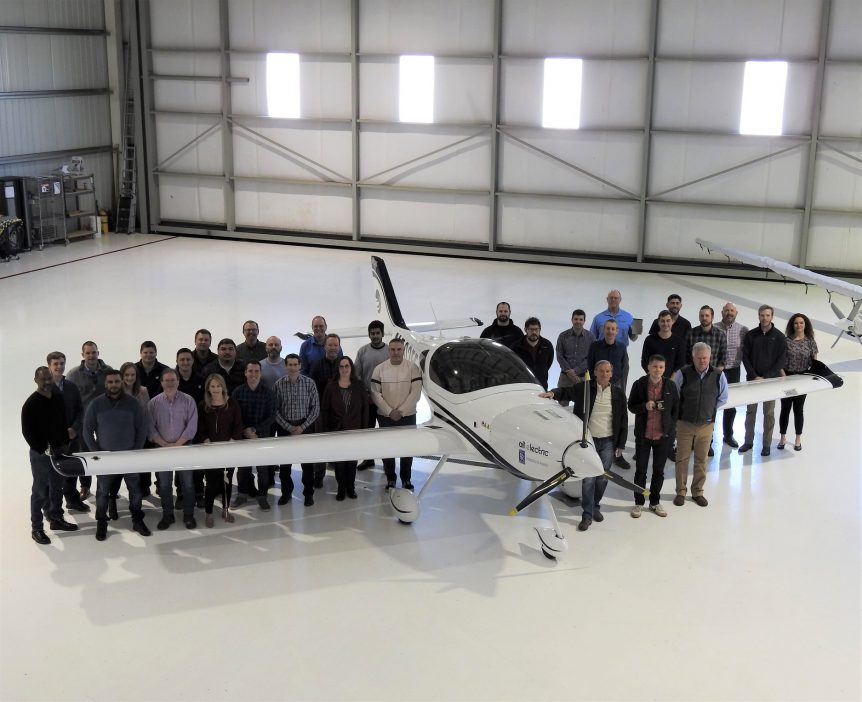For those of us who find trudging over miles of airfield, such as Oshkosh’s AirVenture, or even local fly-ins spread along a runway tiring, Grenchen, Switzerland’s Electrifly-In may be welcome relief. The event, previously called the Smartflyer Challenge, is planned for September 12 and 13 and should draw electric aircraft from all over Europe. Grenchen, a town of just over 2,000, has an airport with a single runway of only 865 meters (2,838 feet), enough to enable a Cessna Citation CJ3 to land (and presumably depart). The runway will host this year’s newly re-named Electrifly-In, devoted to promoting electric aviation. All the activities will be held in a small, easily-accessible area. All Electric Aircraft – All Day A baker’s dozen aircraft have been promised for the event, ranging from ultralight motorgliders to more advanced sailplanes with front electric sustainer motors, to four-seat hybrid tourers, two-seat trainers and even an e-race airplane. AlpinAirPlanes GmbH, will bring their Pipistrel Velis E. Martin …
Two New Electric Sailplanes
Two electric sailplanes come from different ends of the soaring spectrum and each shows its own unique character. Their differences are as noteworthy as their geographic separation. Birdy Birdy is a single-seat, electrically powered motor glider that fits the European Union 120 kilogram class. The 264-pound empty weight puts it 10 pounds above America’s FAA Part 103 254-pound limit. But Euro craft in that category are not as limited in top or cruise speed. Birdy’s light weight required clever arrangement of components to enable a maximum takeoff weight of 280 kilograms (616 pounds) and pilots up to 1.95 meters (6’ 5”) tall. Its 13.5-meter (44.29-foot) wingspan carries only 13.9 pounds per foot, enabling 40:1 glide ratio at around 90 kilometers per hour (55.8 mph). Its 8.3 square meter (89.3 square foot) wing area lifts only 6.89 pounds per square foot, enabling a 63 km/hr (39 mph) stall speed with flaps. Birdy can top out at 180 km/hr (111.6 mph), well …
Regenerative Gas Turbines for Hybrid Aircraft
Beth Stanton shared an email she received from Alex Kovnat, EAA #452346, telling of Turbotech S. A. S., “A startup company” making very efficient gas turbines. Turbotech “has patented a regenerative, high-temperature heat exchanger that increases the efficiency of low power turbines by a factor of 2–3. They achieved this by recycling what would normally be waste heat in the exhaust gases to preheat the air entering the combustor, resulting in less fuel required to generate the same amount of power. Turbotech views the turbogenerator as the ‘missing link”’ that will enable the future of hybrid-electric aeronautical propulsion.” This regenerative ability reduces the amount of fossil fuel required to make things work – a valuable criterion while we await better batteries and cheaper fuel cells. The French company makes both a small turboprop engine, looking very much like “A downsized version of the AGT-1500 regenerative gas turbine that has served since the 1980’s as the power plant for the Army’s …
Switzerland to the North Sea – Flying Electrically
We’re still early in attempts to set world records with electric airplanes. Jean-Luc Soullier, a friend of the blog, held many of them a decade ago, flying a little Colomban MC-30, an ultralight designed by one of Concorde’s engineers. At the other end of the size scale, Solar Impulse set many records on its globe-girdling treks. Now, a five-member mostly German team hopes to set seven world records “in one fell swoop” as they electrically traverse 700 kilometers (435 miles) between the Schanis, Switzerland airport and Norderney Airport on Germany’s North Sea. Friends of Electric Mobility The five have interesting professional lives beyond their love of flight. “Futurologist Morell Westermann, Swiss pilot Marco Buholzer, the Norderneyer brewer Tobi Pape, the video and music producer Tom Albrecht and the podcaster Malik Aziz, who founded the association ‘Friends of Electric Mobility’ want to start on August 31,” according to Electric-Flight.eu. They will fly Pipistrel’s recently certified Velis Electro. The team adds, “Above …
SolarStratos Returns to Service
SolarStratos, a mission envisioned by Raphaël Domjan and an airplane designed by Calin Gologan, returns to the skies after suffering a literal break in its program in 2018. During a series of tests that put increasingly heavy loads on the wings, its left wing broke with what was called a “technical damage.” This type of breakage during stress testing is not uncommon, especially on what are special machines such as SolarStratos and Solar Impulse. Solar Impulse 2 suffered a similar break when its newly-designed wing was being tested. As noted, this type of setback takes the team back to the drawing board, but also besets them with new reflections on their ongoing decisions. If it were easy, everyone would be doing it. “This pioneering spirit involves a real technological challenge, and takes us to unknown territories. Risks are an integral part of such a project, even if our objective is to anticipate them as well as possible; this is why …
Electric Aviation Group Goes Big
Emulating bird flight has been a big part of man’s desire to fly through the years. The latest in ornithological look-alikes comes from the Electric Aviation Group in the United Kingdom. Their creation seem to be an outgrowth of last year’s somewhat controversial Bird of Prey concept displayed by Airbus at several prominent airshows. Designed to have a “certain ‘Wow’ factor,” the model took its cues from hawks and eagles, including a high-arched wing blended into the upper fuselage. It featured wingtips much like a bird’s, with primary feathers ostensible capable of morphing to control banking and even adverse yaw in a turn. Even its patriotic tail feathers were indeed feather-like and added to the avian quality of the aircraft. Sailplane designers in the 1930’s tried similar imitation, with craft like the German Fafnir reaching an arch-winged perfection. Its flight, at least in this video, would be a model of grace and smooth, flowing motion – a bit dreamlike. Hybrid …
HyPoint and Hydrogen Flight
Their web site proclaims, “HyPoint, Inc. is developing the next generation hydrogen fuel cell system with zero CO2 emissions and game-changing energy performance for the air transportation and urban air mobility market.” Pointing out a “fundamental barrier at a chemistry level” for lithium-ion batteries, the fuel cell maker launches some seemingly outrageous claims. HyPoint states, “Our patented technology increases operational time and utilization rate while decreasing TCO (total cost of operation) of any flying platform.” They claim “5X operational time, 10X utilization rate, 20X faster charge,” and a TCO 90 percent of equivalent battery-powered systems. As we have reported here, demonstrated outputs for lithium-ion cells are around 350 Watt-hours per kilogram, and about 260 Whr/kg at the pack level. HyPoint says it can already demonstrate a system-level specific power of 1,000 Watts per kilogram and an energy density of 530 kW-hr/kg. The company points to its next generation of “turbo air-cooled” units to produce even more power and show better energy density. These improvements would make the …
Wisk Tests Cora in US, New Zealand
Recently renamed Wisk (formerly KittyHawk) has resumed flight testing of its Cora eVTOL (electric Vertical Take Off and Landing) machines following a cautionary corona virus shutdown. It’s already got a fleet, with several prototypes in the U. S. and at least four in New Zealand. New Zealand seems to have a lock on flight testing for unpiloted aircraft, with Pyka and Cora both finding amenable administrators willing to allow flight tests. Boeing and Wisk are collaborating on achieving urban air mobility with the two-seat machine, and getting a lot of positive vibes from the locals. Partly from the NZ government, partly from local businesses, and partly from indigenous Maori tribes’ people, Wisk and Cora have found wide-spread acceptance down under. Government Support Research, Science and Innovation Minister Megan Woods announced last October that, “The Government is establishing an Airspace Integration Trials Program to support the safe testing and development of advanced unmanned aircraft and accelerate their integration into the aviation …
Cuberg Batteries – Some Real Numbers
Cuberg, a startup battery company based in Emeryville, California, is pretty specific about its cell-level battery performance – 369 Watt-hours per kilogram at a discharge rate of C/20. This was verified in testing at the Idaho National Laboratory, with Cuberg cells demonstrating a specific power of 2,000 Watts per kilogram. Cells lasted through “around” 370 cycles with C/2 charging before they dropped to the ability to maintain 80-percent capacity. See a .pdf of the test results here. Verifiable Numbers INL tested around 20 of Cuberg’s battery cells, covering multiple cell variants across a spectrum of performance tests. “While the testing all looked good, our announcement addresses the specific metrics that are of most impact to our industry,” Cuberg CEO Richard Wang told eVTOL.com. Independent testing by certified laboratories enables us to see verifiable numbers, highly important in designing new electric aircraft and converting existing aircraft to electric power. Gasoline and Diesel fuels already have well-established numbers, which makes determining output …
Bye Announces Progress, Purchases, Personnel
Ms. Diane Simard, Executive Vice President and board member at Bye Aerospace, has brought several major pieces of news regarding the company’s progress, client purchases and new personnel to your editor’s attention. There are even plaudits for the firm and its founder. Progress Bye Aerospace explains an important facet of new aircraft development, especially for one with a totally new technology. “A critical design review (“CDR”) is a multi-disciplined technical review to ensure that each eFlyer 2 primary system can proceed into fabrication, demonstration and test. The CDR review also meets the FAA 14 CFR 23 Amendment 64 certification standards and performance requirements within the eFlyer 2 cost, schedule and safety criteria.” George E. Bye, CEO of Bye Aerospace, expressed his appreciation to the firm’s workforce, who accomplished this despite working from home in many instances. “I’m grateful to our remarkable team of engineers, designated engineering representatives, our development partners and suppliers for their support in the engineering progress of …


